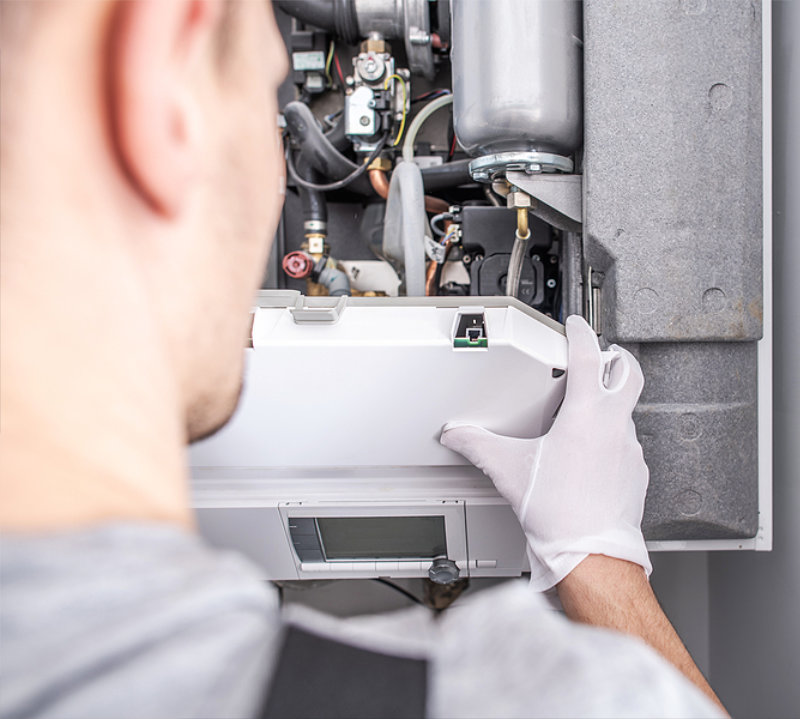
Warm is distributed via your home in a selection of means. Forced-air systems utilize ducts that can additionally be made use of for central air conditioning and heatpump systems. Radiant heat systems additionally have unique warm circulation systems. That leaves 2 warm circulation systems-- steam radiators and also hot water radiators.
Vapor Radiators
Vapor heating is one of the oldest heating innovations, however the process of boiling and also condensing water is inherently less reliable than even more modern systems, plus it typically struggles with considerable lag times in between the boiler activating and also the warm arriving in the radiators. Because of this, heavy steam systems make it hard to apply control strategies such https://furnace-repair-vaughan.com/faq/ as an evening setback system.
The very first main furnace for structures utilized heavy steam distribution since steam steps itself through piping without making use of pumps. Non-insulated steam pipes often provide unwanted warmth to unfinished locations, making fiberglass pipeline insulation-- which can endure heats-- very cost-efficient.
Regular maintenance for vapor radiators relies on whether the radiator is a one-pipe system (the pipeline that provides heavy steam additionally returns condensate) or a two-pipe system (a separate pipe returns condensate). One-pipe systems make use of automated air vents on each radiator, which bleed air as vapor loads the system and afterwards closed immediately when vapor gets to the air vent. A stopped up air vent will keep a vapor radiator from warming up. An air vent stuck open enables vapor to constantly leave to the home, increasing relative moisture as well as throwing away gas. Air vents can in some cases be cleaned by steaming them in a water and also vinegar remedy, yet normally need to be replaced.
Heavy steam radiators can additionally warp the floor they are remaining on and also their thermal expansion and also tightening over time can dig ruts right into the flooring. Both of these impacts can cause the radiator to tilt, preventing water from appropriately draining from the radiator when it cools down. This will certainly cause banging sounds when the radiator is warming up. Shims ought to be inserted under radiators to pitch them slightly toward the pipe in a one-pipe system or toward the vapor catch in a two-pipe system.
In two-pipe systems, older vapor traps usually stick in either the open or closed placement, throwing off the balance in the system. If you appear to have issues with some radiators giving excessive warm and others giving inadequate, this might be the cause. The most effective approach is frequently to simply replace all the steam catches in the system.
Vapor radiators found on exterior wall surfaces can trigger warmth loss by emitting warmth through the wall surface to the outdoors. To avoid such warmth loss, you can mount heat reflectors behind these radiators. You can make your own reflector from foil-covered cardboard, available from many building supply stores, or by installing foil onto a foam board or other similar insulating surface. The foil needs to deal with far from the wall surface, as well as the reflector ought to coincide dimension or slightly larger than the radiator. Periodically clean the reflectors to keep optimal warm reflection.
Warm Water Radiators
Hot-water radiators are among the most typical heat distribution systems in newer houses, 2nd only to forced-air systems. They are typically a baseboard-type radiator or an upright layout that appears like vapor radiators. One of the most typical problem in hot-water systems is unwanted air in the system. At the beginning of each heating season, while the system is running, go from radiator to radiator and open each hemorrhage valve a little, after that close it when water begins to escape via the valve. For multi-level homes, begin at the top floor and also work your method down.
One way to conserve power in hot-water systems is to retrofit them to give different zone control for different locations of large residences. Zone control is most reliable when large areas of the home are not utilized usually or are made use of on a various timetable than various other parts of the home. A heating professional can install automated valves on the hot-water radiators, regulated by thermostats in each area of your home. Utilizing programmable thermostats will allow you to immediately heat and also cool off portions of your home to match your usage patterns.
Zone control works ideal in homes created to operate in various home heating areas, with each zone insulated from the others. In houses not made for zone control, leaving one area at a reduced temperature can create comfort problems in adjacent areas since they will certainly lose heat to the cooler parts of the home. Zone control will certainly also work best when the cooler sections of the residence can be isolated from the others by closing doors. Sometimes, new doors may be needed to separate one location from another. Cooler parts of the home need to be kept around 50 ° F to prevent pipes from freezing. Never turn off warm completely in an unused part of your house.